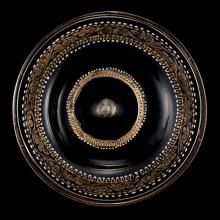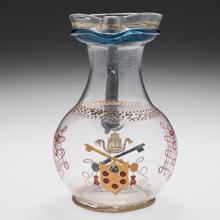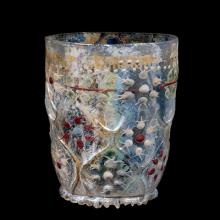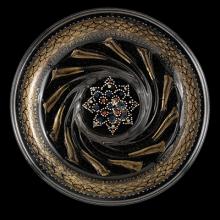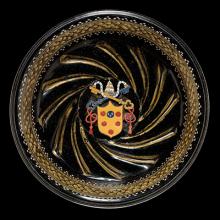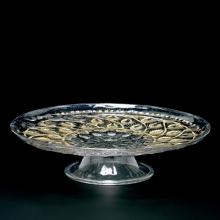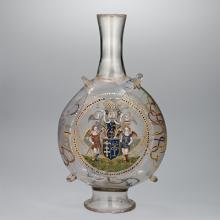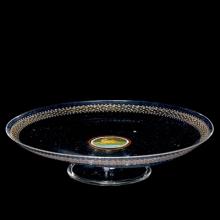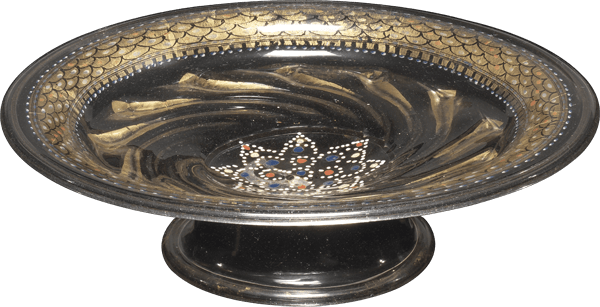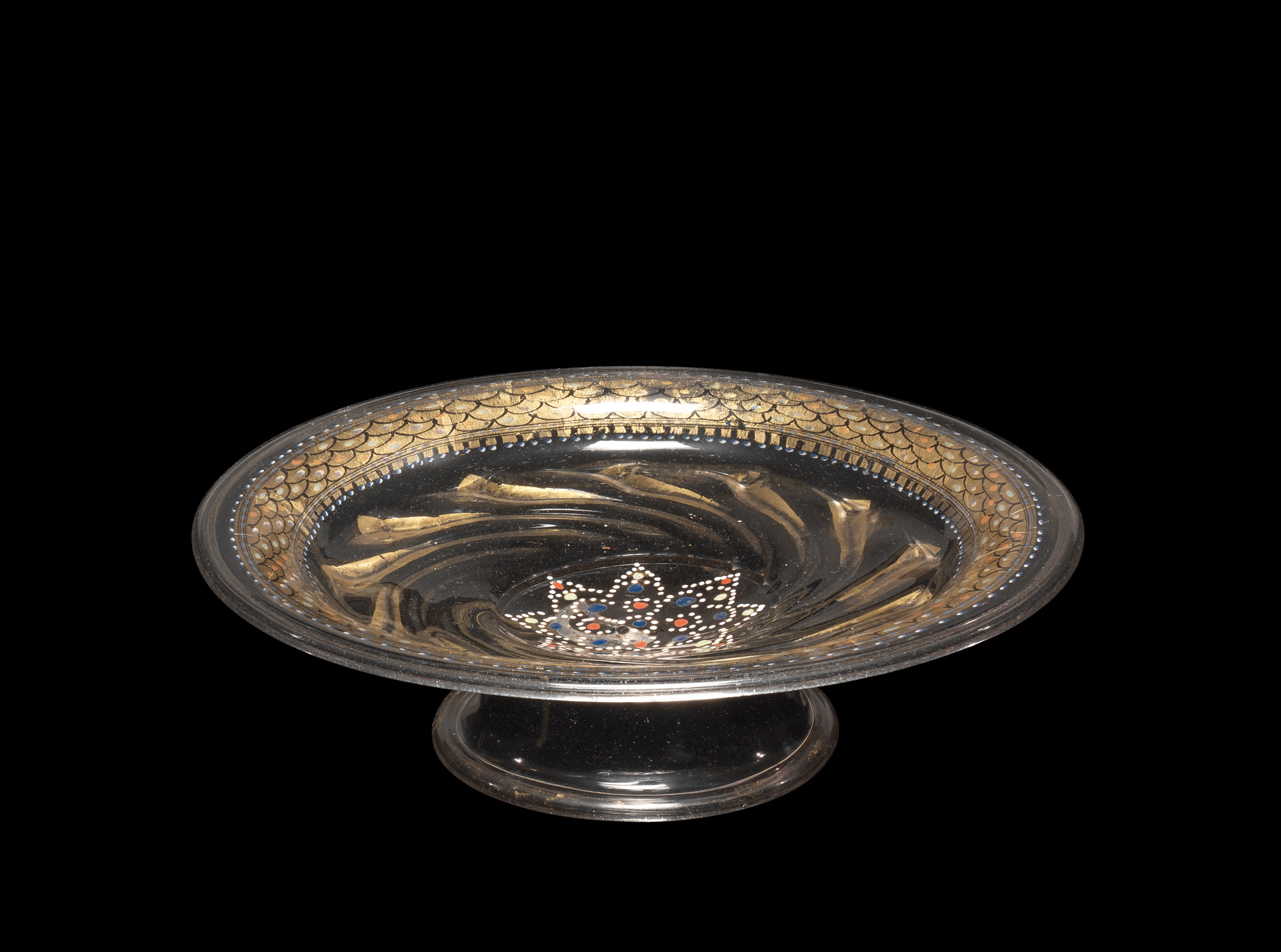Enameled Tazza
Enameled Tazza
The blank for this tazza is made using mezza-stampatura. The object is then decorated with gilding and enameling.
Enamels consist of intensely colored glass (or colorless glass that has been mixed with a metallic oxide) that has been finely ground and mixed with a liquid medium to facilitate painting. After its application to a cooled object, the decoration is fired at a high temperature for permanence. Gold is usually applied in the form of leaf or slightly thicker foil; the gold and enamels are fired together.
Transcript
Venetian glass of around 1500 that’s been decorated with gilding and enameling has a very different shape blank than the shape of the finished product. First, glass is gathered onto the end of the blowpipe. This will become the bowl of the vessel. The glass is rolled back and forth on the metal table called the marver. This is to make the glass perfectly concentric with the blowpipe. Air is blown into the pipe, and a bubble forms. Blowing and marvering simultaneously drives the bubble towards the tip of the gather. The gather is made to fit perfectly the dip mold, or optic mold. This first gather will act as a plunger. A small amount of glass is gathered onto the very tip of the first gather. This is plunged into the optic mold, the first gather acting as a piston to push the glass upward into the grooves of the mold. After reheating, the glass is marvered in place, and the friction and the torque twist the pattern. Air is blown into the pipe; the tip is held and rotated to further tighten the twist. A constriction or neck is made between the blowpipe and the vessel body. Excess glass on the tip is trimmed, as well. The process of inflating the glass further, constricting the neck, trimming the tail continues until the vessel is spherical. The bottom is made slightly pointed, and the sphere transformed into the shape of an oblate spheroid. Next, glass is gathered on the end of another blowpipe, and this will become the foot of the vessel. A constriction is made near the blowpipe, and the bubble is lowered onto the tip of the vessel. A constriction is made, and this will allow a hole to be formed in the end of the foot bubble. This will become the rim of the foot. The glass is reheated, and the two-bladed tool called the jacks are used to dilate the hole. The bubble is further inflated with the soffietta, or puffer. Typically these vessels have an inner fold on the foot. The foot is given its final shape, and the edge made flat. The site where the punty will be attached is cooled slightly, and after a flash in the furnace, the punty (or pontil) is attached. The pincers are held in the neck, and with a small tap the neck breaks. The vessel is now attached to the punty and ready for the opening process. Again, the soffietta is used to further inflate the bubble. As the foot did, the vessel has a folded rim, but this is an outer fold. The final shape of the blank will be that of a cylinder. It’s not until the firing process that the final shape will be given—that of an open bowl. The finished blank is broken free of the punty (or pontil) and annealed (or cooled gradually) to room temperature. The decorating begins with the gold. An adhesive is made by mixing water and a little gum arabic. This is painted onto the side of the blank. After it dries slightly and becomes tacky, gold leaf is gently pressed onto the adhesive. The gold sticks. This continues until the circumference is covered with gold leaf. After the gum arabic and water dries, gold is scraped away to form an even edge at the top and bottom. And gold is scraped away to form designs. Next comes the enamel. Intensely colored powdered glass is ground finely in a mortar and pestle, mixed with a little gum arabic and water, and when it’s slightly thick, it’s painted onto the vessel. After the painting is completed, the blank is thoroughly dried. The decorated blank is placed in a cool oven. The glass is gradually heated to about 1000 degrees Fahrenheit. The punty is reattached. The vessel is reintroduced into the glassworking furnace. Eventually the vessel becomes soft again. Only when the vessel becomes soft do the enamels begin to fire. The soft glass is tooled to increase the diameter of the vessel. And the final shape is achieved with centripetal force, simply by spinning the vessel till the rim opens fully. The decorated blank—the finished object is yet again placed in the annealing oven and broken free of the punty. The parts of the glass that change shape stretch the dots. In the center, the vessel changes shape very little; the dots remain round. Around the edge, where the greatest stretch occurs, the dots become oval. There is a double punty mark. This is from the first puntying to make the blank and the second to fire the decoration.
See all: Objects and Techniques

